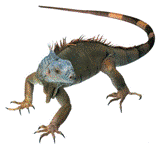Papers in the Biological Sciences

Papers in Herpetology
Document Type
Article
Date of this Version
May 2004
Abstract
Lizards in the genus Xenosaurus (Xenosauridae) show a flattened morphology, which is presumably an adaptation for their crevice-dwelling habits. Despite their general morphological similarities (Ballinger et al., 2000a), there is considerable variation among species and populations in ecological traits, and even populations of nominally the same species (e.g., X. grandis grandis and X. g. agrenon; Ballinger et al., 1995; Lemos-Espinal et al., 2003a) show variation, sometimes as much as between different species.
Populations of Xenosaurus are often geographically isolated (e.g., Pérez Ramos et al., 2000; Nieto Montes de Oca, 2001), and movement appears to be minimal (Lemos-Espinal et al., in press), and thus each population may be relatively isolated genetically and subject to local adaptation. Unfortunately, there are very few studied populations of Xenosaurus and in only one species has more than one population been studied (X. grandis; Ballinger et al., 1995; Lemos-Espinal et al., 2003a). In order to further our understanding of variation within this genus, we report on the ecology of a distinct population of X. platyceps from Querétaro. This is the second population of X. platyceps for which we have ecological data (see Lemos-Espinal et al., 1997b for a population of X. platyceps from Tamaulipas). These two populations are separated by 280 km. Both populations are found in oak forest, although the Querétaro population is in denser forest than the Tamaulipas population. In addition, the area in which the Querétaro population lives is rockier and on a greater slope than the Tamaulipas population.


Comments
Published in Amphibia-Reptilia 25 (2004), pp. 204-210. Copyright © 2004 Koninklijke Brill NV. Used by permission. http://www.brill.nl/